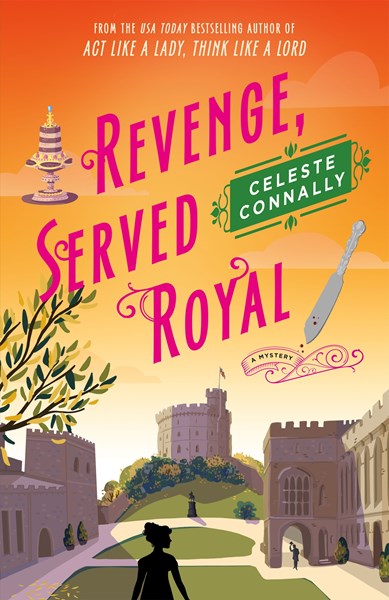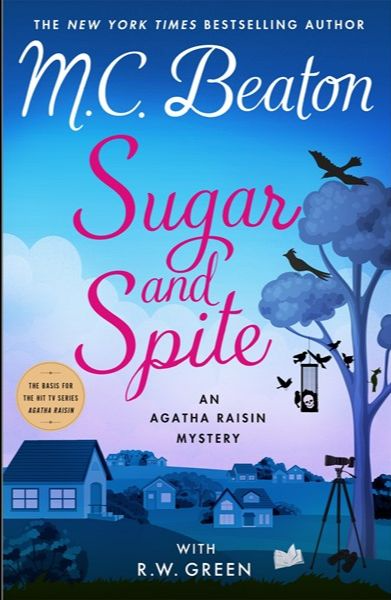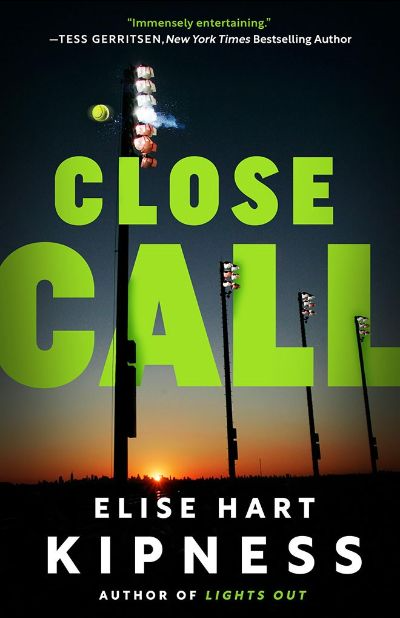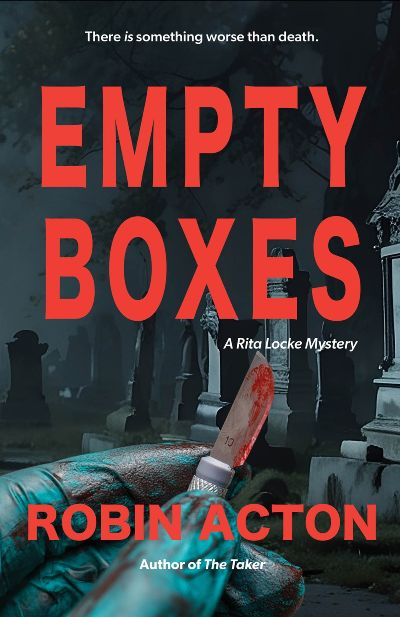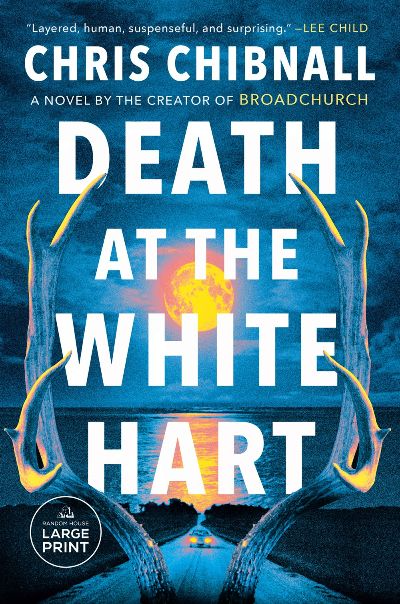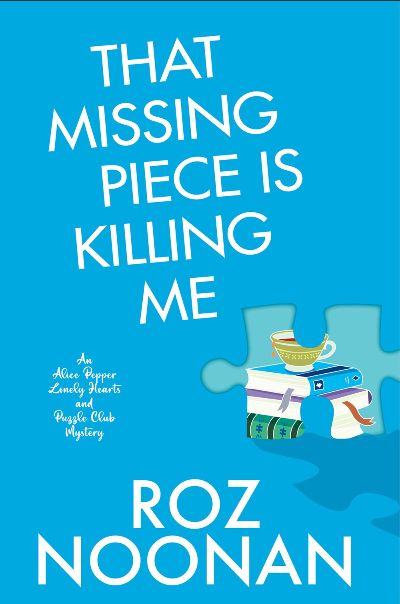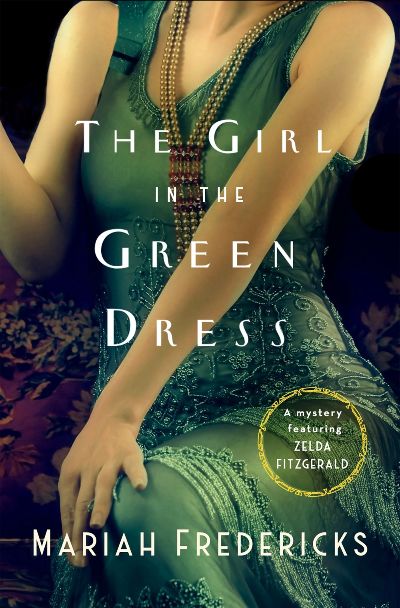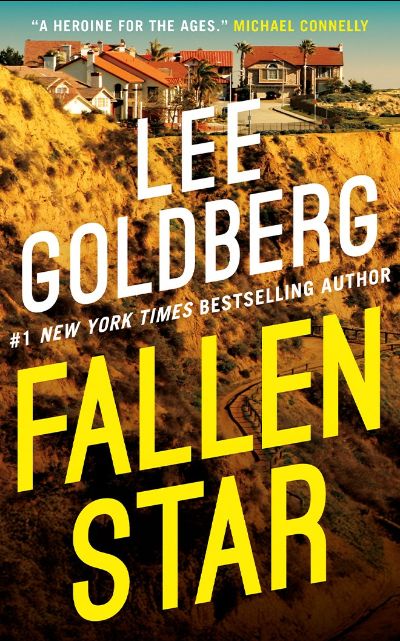I confess, I don’t know where to start this review, there’s so much to the novel that will draw in readers. Should I mention that Regency era-set novels are usually romances, so a mystery that unfolds in the era is a particular treat? Or maybe that the main character, Lady Petra—in her third series outing here—wears lock picks and a dagger beneath her gowns? (Feisty!) How about the baking competition that will attract lovers of The Great British Bake Off and cozies featuring baking? Well, I’m still no closer to an answer, but I will say that readers should pick this up and be ready for delicious treachery, lies, and scandal when everyone who’s anyone in Regency Britain descends on Windsor Castle. They’re excited for a week of diversion that includes a competition to decide the best cook in any aristocratic house in the kingdom. Lady Petra’s stint as a judge is interrupted by the murder of one of the other judges and the sleuthing is on. Try Connally’s previous works in the series (All’s Fair in Love and Treachery; Act Like a Lady, Think Like a Lord) while waiting for this one.
Women Sleuths
Fortunately for M.C. Beaton (aka Marian Chesney) fans, this sixth Agatha Raisin novel created since Beaton’s demise, and written by R. W. Greenby, provides all the fun they are looking for. Mrs. Bloxby, the Vicar’s wife, convinces Agatha to attend a lecture by the Carsely Ladies Society to be delivered by three bird watchers (they call themselves twitchers). Agatha expects a dull evening but it turns out to be quite the opposite as a local farmer breaks up the lecture and threatens the women for trespassing on his land, and then the trio of twitchers ends up having a full-on war among one another. The next day, Agatha learns that one of the women has been discovered dead, and the rather dumb police chief insists it isn’t murder. So off we go, as Agatha takes up the search for the murderer, using the staff of her detective agency, friends, and inside knowledge from the police themselves. A pleasure, but brace yourself for a very surprising ending.
Tiny Dickens Island, located in the sound between Connecticut and Long Island, has a small permanent population composed of families in the midst of some sort of feud or another. Delia has come back after years of living in Manhattan to take up her role as mother to teenage Connor and part manager of the family’s general store. She’s inherited her grandmother’s house and for now is loving being back, though is unsure of her maternal success. Connor finds a secret room in grandma’s house with old books and what may be a pirate map. Delia encounters grandma’s ghost, who visits the room occasionally and offers a unique perspective on island history. The map is stolen by local miscreants and doesn’t lead to treasure but rather to a long-buried body that brings old scandals to the present. With logic, the help of an old love, and grandma’s ghost, Delia puts much of the puzzle together, leading to a solution to the murders and to some of the family feuds. An enjoyable, sandy cozy with the author’s promise of more to come from Dickens Island.
Kipness compellingly combines her background as a sports reporter with her love of crime fiction, and her latest Kate Green thriller is her best yet. Kate is a sports reporter with a recent Emmy win, and she’s asked to cover the U.S. Open and specifically to interview two tennis stars: Brynn, an arrogant but talented up-and-comer, and Lucy, a veteran facing her last event. Brynn does not trust Kate at all, while Lucy is nicer but also hesitant. As Kate continues her coverage, she begins to uncover details that seem straight out of a soap opera rather than the tennis circuit. When Lucy forfeits a match the day after Kate interviews her, the reporter knows that something happened to Lucy and then receives a photo of the bound and gagged player. Kate can’t help but investigate, an effort that will uncover secrets about Lucy and Brynn and reveal personal elements of Kate’s life. There are many suspects here and it is so much fun from the first page to the last. Kipness’s engaging novel is perfect for newcomers to and fans of the series and is a blend of Hank Phillippi Ryan’s work and the Myron Bolitar novels by Harlan Coben. With a recently announced TV deal with Universal Television, picking this up should not be a close call.
The title is a hint to a major plot element in this somewhat tangled, dangerous, multi-crime story with an intrepid reporter at the center. Rita Locke, crime reporter for a major Pittsburgh paper, is awakened early on a Sunday, her day off, by one of her police sources alerting her to a grisly murder in a funeral home. It’s the last straw for her boyfriend, and as she leaves for the crime scene, he ends their relationship. The body was found by a local beautician, and she is mighty nervous when interviewed by Rita. There are dead witnesses, anonymous clues, stolen jewelry, fake medical practitioners, and medical schools, nearly deadly foreign travel, returning boyfriends, and of course, the empty coffins referred to in the title. Yes, the story is crowded, but it is refreshing to have a reporter at the head rather than a cop or a PI, and readers will not be able to put this down towards the end. Here’s hoping for more about Rita Locke.
A likable duo is at the center of Broadchurch-creator Chibnall’s debut: detectives Nicola Bridge and her newbie partner, Harry Ward, dubbed Westlife for his boy-band looks and first name. Small-town Fleetcombe, on England’s Dorset coast, is the setting; it’s Nicola’s hometown, and she’s back to separate her husband from an affair, a plot line that creates a realistic undercurrent of desperation that matches the bizarre crime facing the new partners. The naked body of a man is found tied to a chair on a road near town. That’s odd enough in Fleetcombe, where sharp words at the local pubs—one of them the White Hart of the book’s title—are about as violent as it gets. But there’s more: the body has a stag’s antlers affixed to its head, a sinister touch that eager Harry tries to tie to mythology and local history, only to be brought back to earth by his more practical and seasoned colleague. Work the evidence, she says, setting the two on a winding path that creates a solid procedural enjoyably filled with oddball townspeople, personal travails, the inevitable local criminal element, and one very savvy little girl, a character whom readers will want to swoop in and save. This absorbing thriller shows all the hallmarks of having been written by a master of TV drama.
Alice Pepper has one busy life. She’s director of the West Hazel, Oregon, public library. She’s the center of a group of friends—all puzzle fanatics—who regularly meet for meals and puzzling. And she’s got plenty of family members, like her nieces, whose lives she needs to keep an eye on. She may have had to put off retirement because her divorce has wiped out much of her savings, but Alice always keeps focused on what’s important. And in much of this book it’s the disappearance of her friend Michelle Chong, martial and visual artist, that has Alice’s attention. Did Michelle run away, finally escaping from that no-good husband to create a life elsewhere, or was she a victim of domestic violence? Nearly half the book is devoted to searching for Michelle, and once that’s resolved this second book in the series (after Puzzle Me a Murder) expands deeper into Alice’s world—which is loving and caring, yes, but also features major pieces of the past she has been unable to resolve. For fans of Richard Osman, Nancy Bush, and Leslie Meier.
I possess real expertise in only a few areas. Just two, in fact. One is crime fiction, and the other is public libraries and what makes them work. So naturally I was pretty elated to come across The Librarians, and I’m happy to report that Sherry Thomas portrays libraries and librarians as accurately as I have ever come across in a book. Set in a modest branch library in the suburbs of Austin, Texas, the novel dwells on four quirky staff members, each of whom has found both a sense of purpose and a home in the library, as well as strong friendships. But after the library’s new game night, two library users are found dead. And remarkably, these deaths trigger stories from each of the librarians, with each one finding their lives turned upside down. Thomas is a much-lauded author of historical romance, and this book shares in the eloquent writing she is known for. Perfect for a book-group discussion.
As in her earlier novels (The Lindbergh Nanny, The Wharton Plot), Fredericks brings history to life through the eyes of a lesser mortal who is thrust into the world of the rich—and in this case, the notorious—and as in her previous works, succeeds brilliantly. Morris Markey is a New York Daily News journalist in the roaring twenties when he sees Joseph Elwell, a neighbor on the swanky side of their Manhattan street, escorted home by the mysterious woman of the book’s title, her dress resembling confetti made from money. He thinks little of it—the rich will be the rich, after all—until the next morning, when Elwell is found dead. Markey seeks help from a couple who know everyone and can get in anywhere: Scott and Zelda Fitzgerald, whose glamorous yet sad life is examined in emotional detail by Fredericks. Scott gets less limelight here than Zelda, whose desperation to be fascinating takes center stage and will engross readers. Authenticity shines from the page as the author provides tidbits from period journalism and other sources and recreates the forced frippery of the Fitzgeralds’ sometimes-mean bon mots. A real world is carefully created around the question of who the girl in the green dress is, whether she killed Elwell, and how far into the Fitzgeralds’ glitzy world a working man dares go. For a great pairing, try this alongside Avery Cunningham’s The Mayor of Maxwell Street.
Los Angeles Detective Eve Ronin uses an unorthodox method to stop a robbery while off duty, putting her in the boss’s crosshairs in Goldberg’s (Dream Town, Calico, Malibu Burning, Ashes Never Lie) latest. Eve is torn between her celebrity status from having a TV show based on her “life” and the higher-ups who want her to leave. Even a suspension is temporary when videos of Eve stopping the robbery go viral and a dead body is discovered in a metal drum. Her life and the case escalate when one of the suspects has a vendetta against her. Add corruption inside her own department and a helicopter crash that hits literally too close to home, and she barely has time to breathe. Eve must balance her pursuit of justice and be on her best behavior since one false move could mean the end of her career, even if she’s the most famous detective in Los Angeles. Readers will love Goldberg’s dive into Eve’s world and the quirky aspects of Los Angeles life as well as the continuing story (Goldberg even throws in an extensive cameo featuring featuring his other series characters). Whether Fallen Star is your first time reading Eve or your sixth doesn’t matter. In either case, Goldberg has done it again with a compelling and complex mystery.

